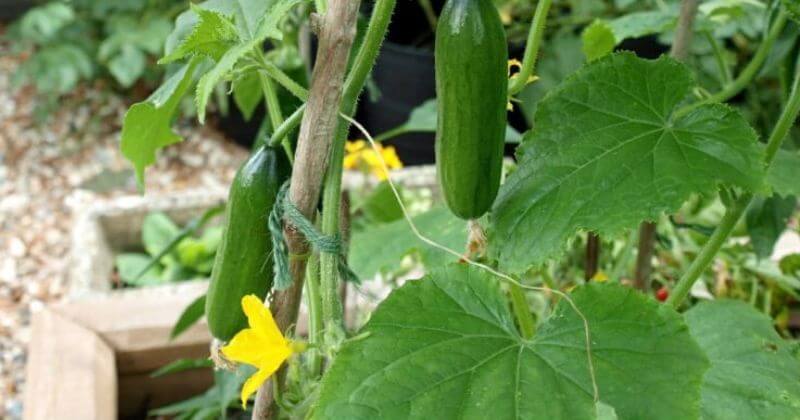
Do you want to grow cucumbers in your garden, but think that you can’t since you only use container gardening? Lucky for you, growing cucumbers in pots is an easy task, but not everyone realizes that they grow well in containers.
Even though cucumbers are known for their sprawling nature, they can be grown in containers. You have to pick the right variety and learn how to train the vines to grow up a support system.
Cucumbers are a warm-season crop that needs to be planted after the final frost in your area. They thrive throughout mid to late summer, giving you a bountiful harvest two months or more after you plant the seeds.
So, how to grow cucumbers in containers? here’s the 5 tips to start growing cucumbers in pots easily.
Do you want to grow cucumbers in pots on your patio or in your garden? In this article, we cover everything that you need to know about growing cucumbers in a container garden.
From how to plant cucumber seeds to how often you need to water the plants, this guide will make it easier for you to grow your own cucumbers at home.
11 Simple Tips For Growing Cucumbers In Pots Like A Gardening Pro
Cucumbers can grow prolifically in containers, but only if you take the right steps. The right steps include picking the right location and the proper sized containers to grow your plants.
Here is what you need to know.
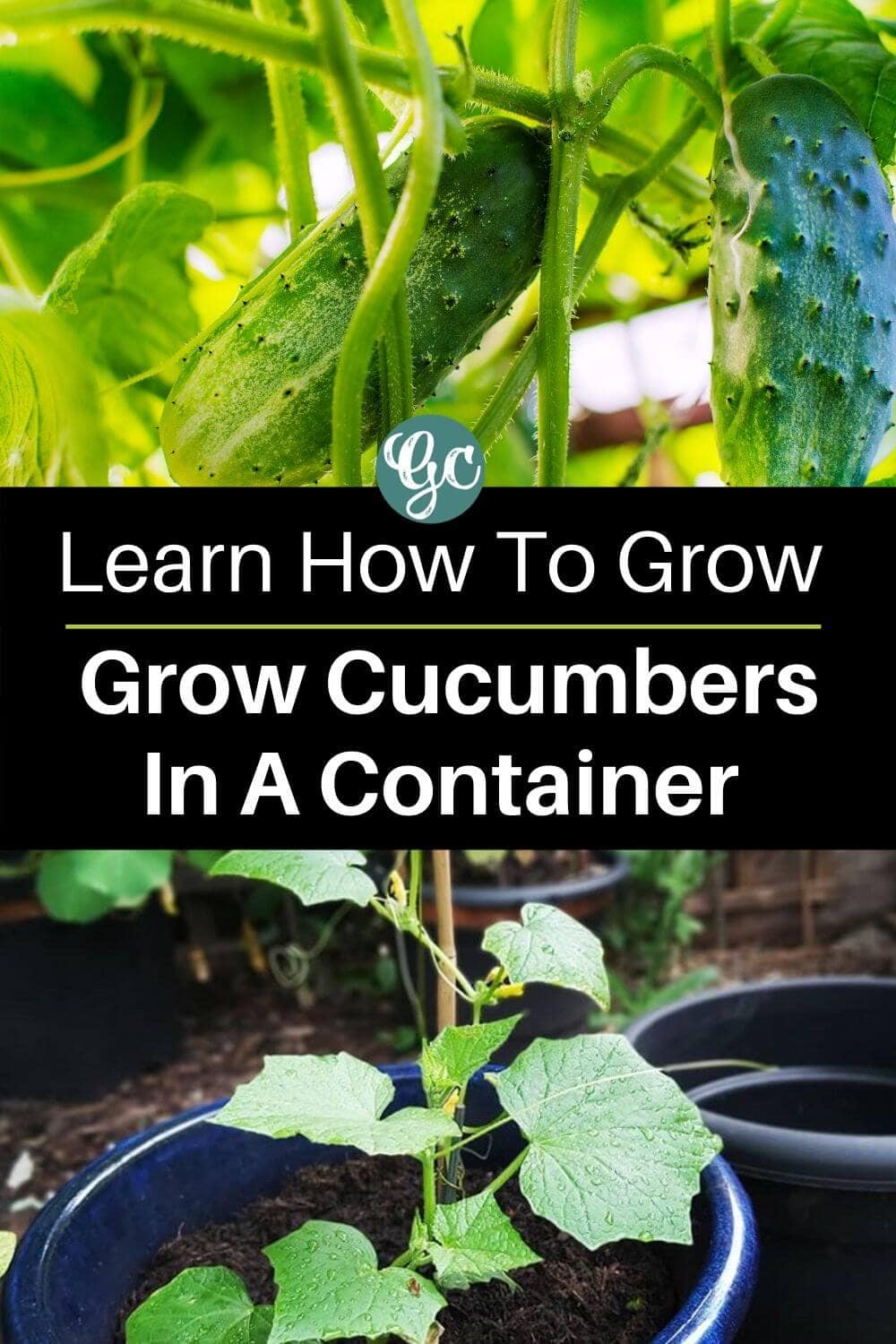
1: Choose Best Varieties Of Cucumbers For Container Gardening
All cucumber varieties are members of the Cucurbitaceae family, which also includes other garden vegetables such as summer squash, winter squash, and gourds. If you’re growing cucumbers in pots, you need a compact variety that works well for small-space gardening.
Here are some of the best cucumber varieties for containers.
Picolino
This is a slicing variety that matures fruits in 50 days. These cucumbers have a sweeter flavor with thin skin and a crispy texture that everyone loves.
Saber
Here is an American slicing cucumber that grows 8-inch long fruits. It takes these fruits 55 days to mature, and no pollination is required.
Little Leaf
If you don’t want to worry about pollination, Little Leaf is a no pollination required variety that produces small 3-4-inch fruits. It takes around 58 days to mature.
Poona Kheera
As you might imagine from the name, this variety is unique and originates in India. It produces 4-5-inch fruits that have golden-colored skin rather than green-colored. Poona Kheera is considered a very productive variety that matures fruits after 60 days. You do need to have a trellis that is 5-6 feet tall.
National Pickling
If you want a pickling cucumber rather than a slicer, National Pickling grows 5-inch fruits with blunt ends. It’s one of the best pickling varieties, and you can expect fruits to mature after 52 days.
Paraiso
Here is another slicing variety that grows larger fruits, typically measuring around 9-10 inches long. Paraiso is productive, leading to a bountiful harvest starting after 60 days.
2: Pick The Right Spot
No matter whether you grow cucumbers in containers or the ground, you need to pick a spot that receives 6-8 hours of full sunlight each day.
It’s easy to overestimate how much sunlight a particular area receives, so here are some recommendations.
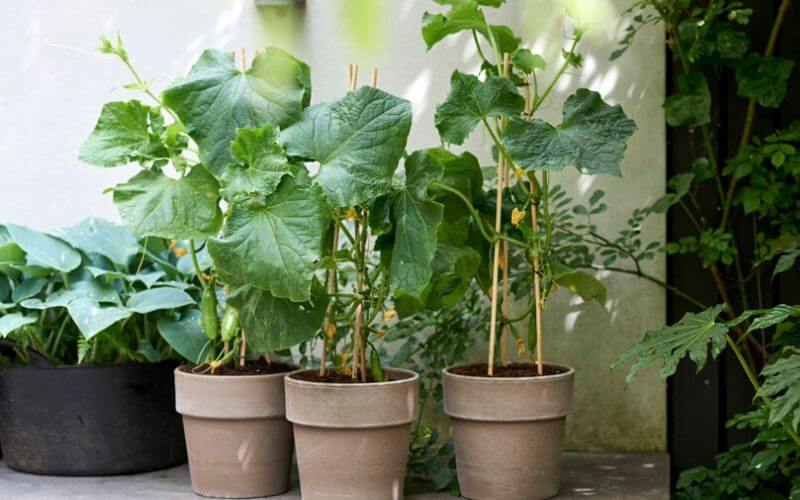
It’s easy to assume that a spot has a lot of sunlight, but when you take a day or two to track how much sunlight the area receives, you might see that you over or underestimated.
If you decide to grow your cucumbers inside, they need to be in a sunny room with plenty of light. You might need to buy a grow light to give the plant proper lighting.
Consider a location that is near the side of your house outside or against a fence because it can reduce the risk of wind damage. Some wind is okay, but strong winds can damage or snap your plants entirely.
3: Use Really Big Containers
Cucumbers do need a large pot with plenty of soil to grow to their optimal size. Their root systems can be extended with vigorous growth and an abundant harvest.
That means you should pick a container for your cucumbers that is, at least, 5 gallons (20 quarts) or larger. If you can find a larger container, that works even better.
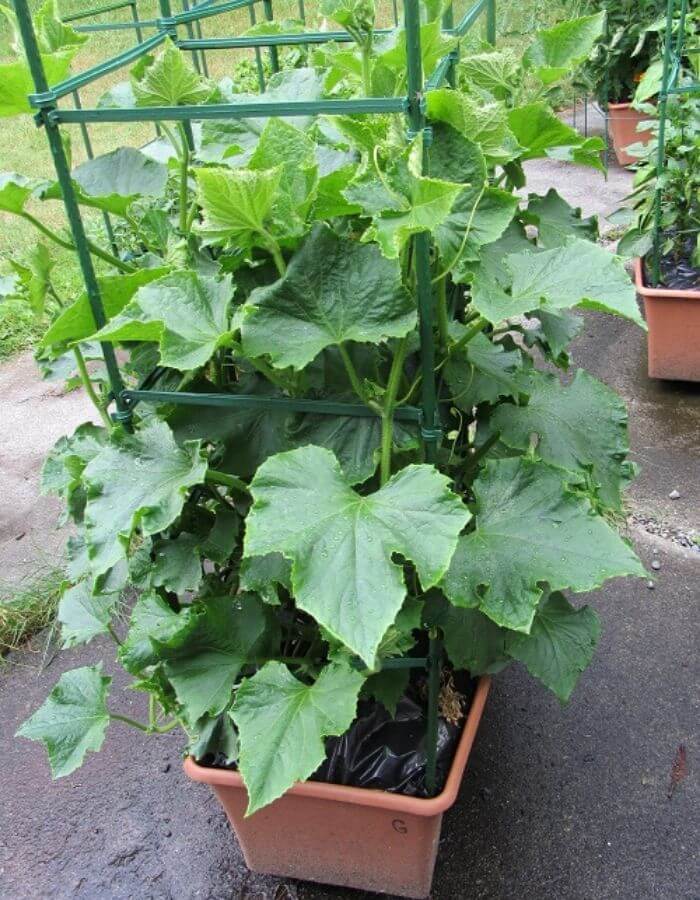
If you can find a self-watering planter, those are an ideal choice for growing cucumbers in pots because it ensures the plants won’t dry out.
Since these plants need plenty of water, the built-in reservoir prevents the soil from drying out too quickly.
4: Offer A Support System
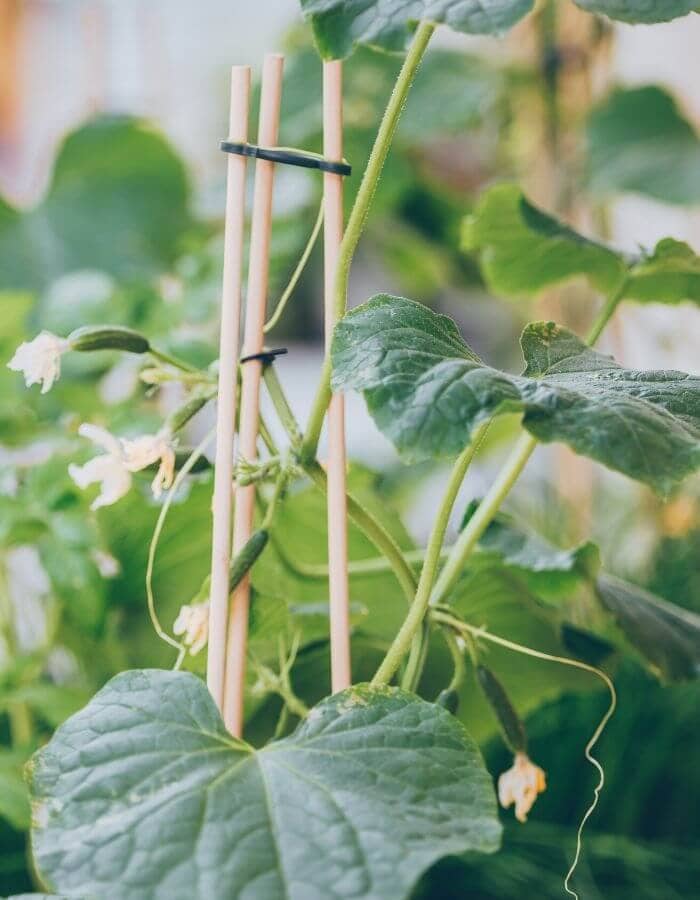
You typically need to have a trellis or some sort of support system for your cucumbers because of their vining habits.
You can use a small trellis that you stick inside of the container. A tomato cage would work as well!
Trellising stops the plants from spreading across the container onto the ground. If it does touch the ground, the plants can be exposed to bacteria.
A support system also gives your cucumber leaves more exposure to sunlight, leading to a more significant yield and fruit quality.
5: Use Well Draining Potting Mix To Fill The Pot
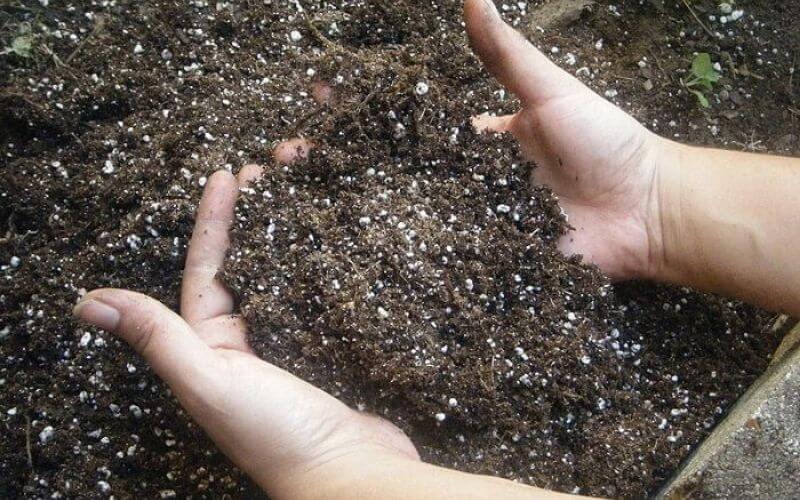
Cucumbers are heavy feeders, so you need rich, fertile soil. That keeps your plants well-fed and helps to retain moisture, which is also necessary for proper growth.
Never use regular garden soil that you dig from the ground. Not only can it have bacteria that might kill your container plants, but it will lack the nutrients needed for proper growth.
You’ll want to use a top-quality, organic potting mix or potting soil. These soils are designed for containers.
You might decide to use a potting soil that has a premixed, granular fertilizer included. If you do, make sure you don’t add more fertilizer because you can burn your plants if you add too much fertilizer.
6: Plant Cucumber Seeds When Temperatures Warm
Cucumbers are warm-season plants that shouldn’t go out in your garden until a week or two after the final frost date. The temperatures need to be warm for the seeds to germinate.
You can grow the seeds indoors for 2-3 weeks before you want to plant them outside. Cucumbers are vulnerable to transplant shock or becoming rootbound.
Try growing the seeds inside in biodegradable pots, which helps to reduce the shock of planting the seedlings outside.
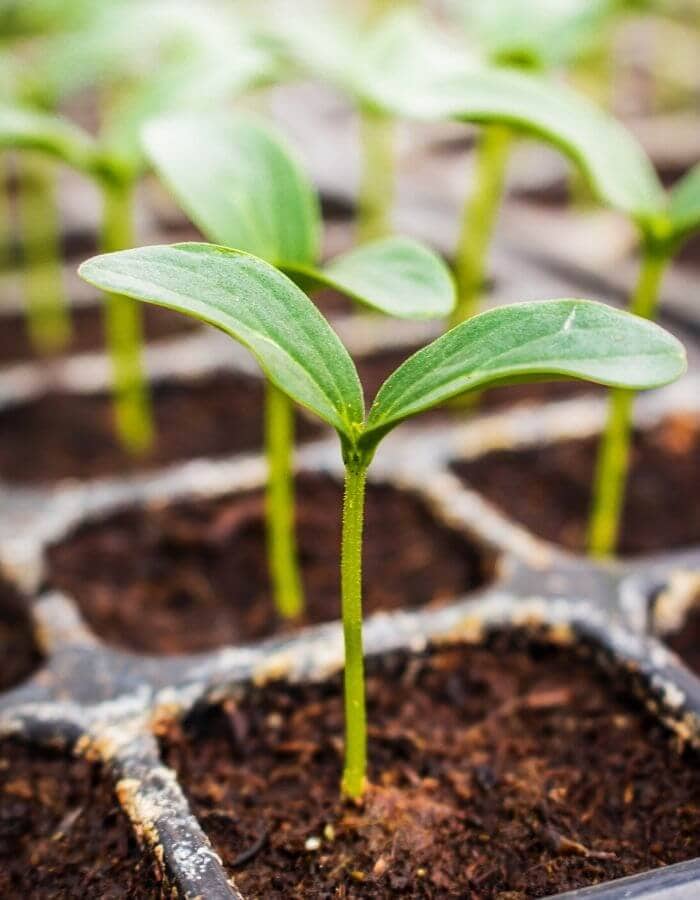
Caring For Cucumbers In Pots
Now that your cucumbers are planted in your containers, you have to take care of the plants. Here is what you need to know about caring for the cucumbers growing in your container garden.
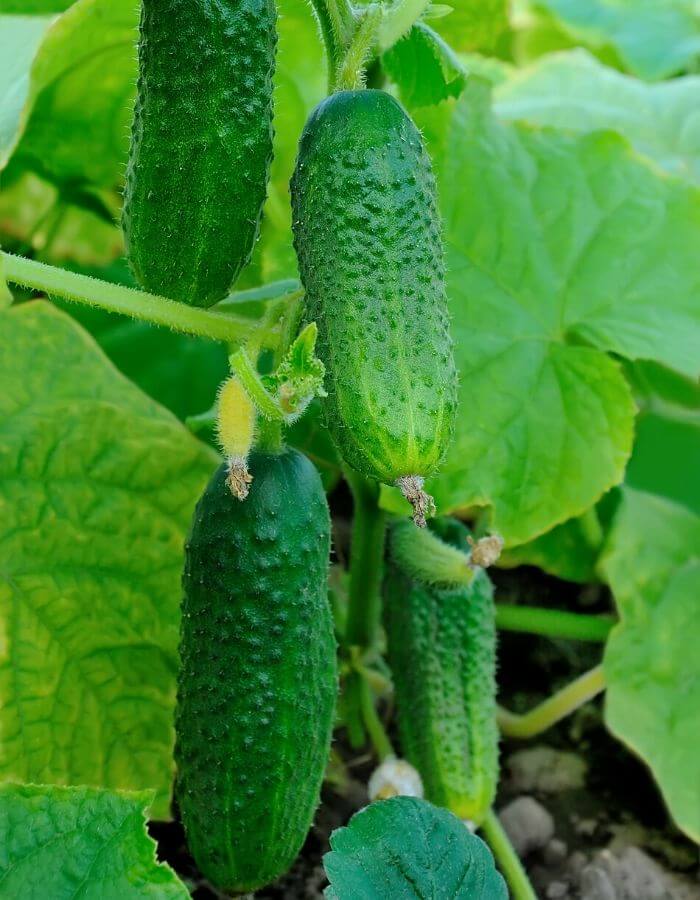
7: Water Cucumbers Thoroughly And Consistently To Keep The Soil Moist
The hardest part about growing cucumbers in pots is getting the plant all of the water needed.
That need consistent moisture, but container gardening dries out faster than in-ground gardening. You have to pay close attention to the soil in your pots to make sure they never dry out entirely.
Since cucumbers rely on a consistent supply of water, you need to check the moisture level each morning, and checking in the morning does matter.
If you do need to water the plant, it’s best to do so in the morning to reduce the risk of the leaves burning in the sun.
Always check the soil with your finger before watering. If the soil is dry, it needs to be watered thoroughly. If the soil feels wet, then don’t water until the top feels dry.
8: Feed Your Cucumber Plant Well
These plants are heavy feeders, so fertilizing is a must-do task for gardeners. When you plant your cucumbers in the early summer, add some granular fertilizer to the soil.
That will give your plants the boost needed to start the growth off on the right foot.
In the middle of the growing season, add plenty of liquid fertilizer. That will give the extra doses of nutrients that are needed for your plants to reach optimal growth.
9: Mulching Around The Cucumber Plants
It’s always a smart idea to mulch around your plants, even if you grow your plants in containers. Spread straw or peat moss over the soil after you water the first time.
Whatever you decide to use, it should be a thin layer of mulch that you put over the soil that surrounds your plants.
Not only does mulch help to prevent weed growth, but it also stops the soil from drying out too quickly.
That makes it easier for you to keep the soil moist while also encouraging better germination and seed growth.
10: Use Organic Pest Control Measures
Cucumbers in pots are less prone to diseases, but that doesn’t mean you shouldn’t be proactive with your pest control measures. Here are a few pests that love to bother cukes.
Many gardeners like to spray their plants with neem oil, which is an organic pesticide. It doesn’t leave harmful residues on your plants. Here are some other options.
11: Harvesting Cucumbers In Containers
Cucumbers grow fast. One day, there will be a small cucumber not ready to be harvested, but the next day, it’s huge and needs to be collected.
That’s why you need to check your plants daily, and you also need to know the average mature size of each variety you grow.
You don’t want to wait for a larger cucumber if the type you’re growing produces fruits that are 3-4-inches long.
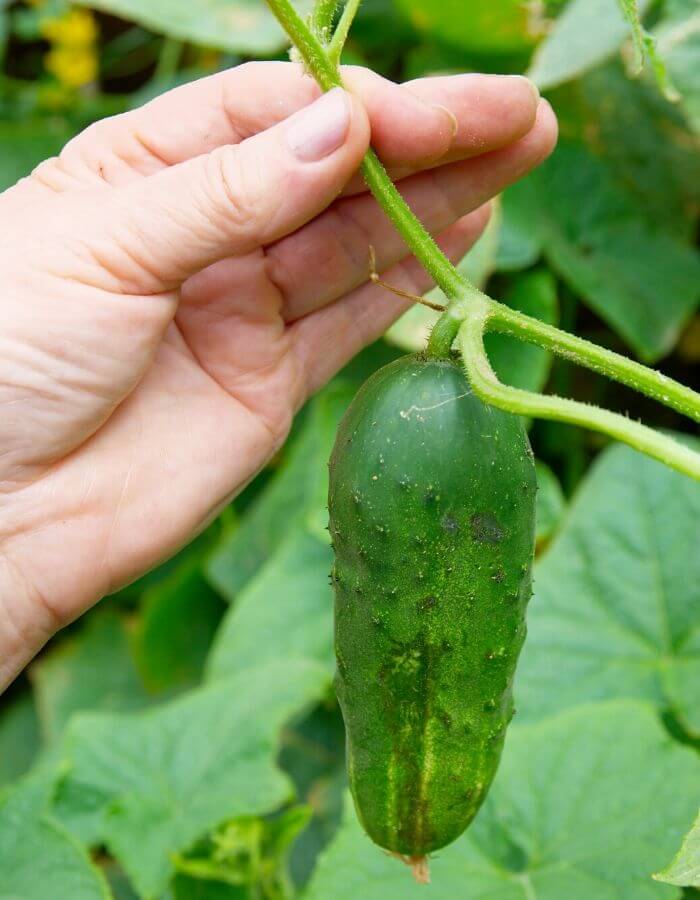
Here are some things you should know about harvesting cucumbers.
Starting Growing Now
Growing cucumbers in pots aren’t impossible. With the right variety of cukes, you can expect an abundant harvest from your plants in containers.
Try growing cucumbers in your container this year to see what you think. Remember to keep your plants well-watered and add a support system for proper growth.

Written By
Amber Noyes
Amber Noyes was born and raised in a suburban California town, San Mateo. She holds a master’s degree in horticulture from the University of California as well as a BS in Biology from the University of San Francisco. With experience working on an organic farm, water conservation research, farmers’ markets, and plant nursery, she understands what makes plants thrive and how we can better understand the connection between microclimate and plant health. When she’s not on the land, Amber loves informing people of new ideas/things related to gardening, especially organic gardening, houseplants, and growing plants in a small space.
